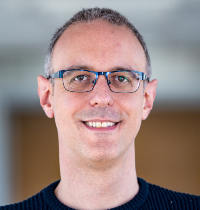
Paolo Casari
Expertise:
{{vm.properties.total}} results - {{vm.properties.numberOfCollections}} teaching activity
No results found
This section provides the list of courses that the person is in charge to teach during the current academic year. Data source: GDA (UniTrento Online Didactics System)
| Teaching activity | ||||||
|---|---|---|---|---|---|---|
|
|
{{corso[0].nome}} |
|||||
|
Department: {{dipartimento.nome}},
Holders: {{titolare.nominativo}}{{titolare.nominativo}},
Professors: {{docente.nominativo}}{{docente.nominativo}},
Assistant: {{assistente.nominativo}}{{assistente.nominativo}},
Tutors: {{tutore.nominativo}}{{tutore.nominativo}},
Abstract:
Keywords {{k}}
|
Loading...


